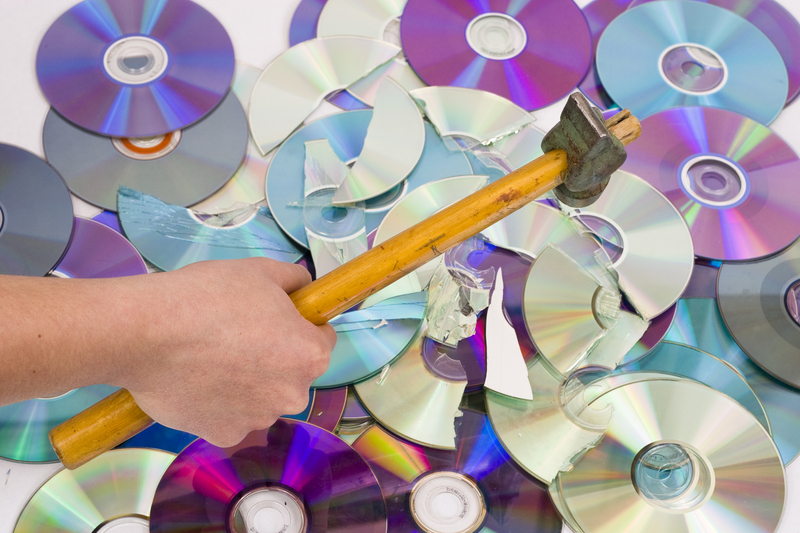Posted on 14/06/2025
Thames River's Plastic Dilemma
The Thames River, a historic and iconic waterway flowing through the heart of London, has long been a symbol of the city's rich heritage. However, beneath its scenic beauty lies a pressing environmental issue: plastic pollution. This dilemma impacts the river's ecosystem, marine life, and the communities dependent on it. In this article, we will delve into the problem, explore its causes, and discuss potential solutions.
The Extent of Plastic Pollution in the Thames
Plastic pollution in the Thames River has reached alarming levels. Studies have shown that the river contains millions of microplastics per cubic meter, posing serious threats to both the aquatic and human populations. A significant portion of the waste found in the Thames includes plastic bags, bottles, and food packaging, all of which take centuries to decompose.

Sources of Plastic Pollution
Plastic pollution in the Thames originates from several sources:
1. Urban Runoff: Rainwater washes plastic waste from streets and sidewalks into the river.
2. Littering: Recreational activities along the riverbanks often result in plastic waste being discarded irresponsibly.
3. Sewage Overflows: Overflowing sewage systems discharge plastic particles into the river during heavy rainfall.
4. Industrial Discharges: Factories and industrial plants along the river contribute to plastic pollution through improper waste management.
Impact on Marine Life
The plastic dilemma poses a severe threat to marine life in the Thames. Animals such as fish, birds, and small mammals often mistake plastic for food, leading to ingestion that can cause internal injuries, starvation, and death. Additionally, plastic can entangle wildlife, resulting in limited mobility and increased vulnerability to predators.
Human Health Implications
The presence of microplastics in the Thames not only affects marine life but also poses potential health risks for humans. As microplastics enter the food chain, they can end up in the seafood consumed by people. Recent studies have shown that microplastics can cause damage to human cells and may lead to long-term health issues.
Efforts to Combat Plastic Pollution
Several initiatives are underway to tackle the plastic dilemma in the Thames River:
1. River Clean-Up Campaigns: Volunteer groups and organizations regularly organize clean-up drives to remove plastic waste from the riverbanks and surface.
2. Public Awareness Campaigns: Educating the public about the consequences of plastic pollution encourages responsible disposal and recycling.
3. Legislative Measures: The UK government has implemented policies to reduce single-use plastics and encourage the use of sustainable alternatives.
4. Research and Innovation: Scientists and researchers are exploring innovative solutions such as biodegradable plastics and advanced waste management technologies.
Pros and Cons of Current Efforts
Pros
- Increased Awareness: Campaigns have successfully raised public awareness about the plastic pollution crisis.
- Policy Changes: Legislative measures have started to curb the use of single-use plastics.
- Community Involvement: Volunteer clean-up drives foster community participation and responsibility.
Cons
- Insufficient Resources: Limited funding and resources can hinder the effectiveness of clean-up campaigns and innovation.
- Enforcement Challenges: Implementing and enforcing policies on a wider scale remains a challenge.
- Persistent Pollution: Despite efforts, plastic pollution continues to persist, indicating that more comprehensive solutions are needed.
Tips to Reduce Plastic Pollution in the Thames
1. Reduce Single-Use Plastics: Opt for reusable bags, bottles, and containers to minimize plastic waste.
2. Participate in Clean-Up Drives: Join local efforts to clean up the Thames or organize your own initiatives.
3. Proper Waste Disposal: Ensure that waste is disposed of correctly and recycled where possible.
4. Spread Awareness: Educate others about the impact of plastic pollution and encourage sustainable practices.

Takeaways
The Thames River's plastic dilemma is a multifaceted issue that requires collaborative efforts from individuals, communities, governments, and organizations. While current initiatives have shown promise, it's essential to continue exploring innovative solutions and enforce stricter policies to protect this vital waterway.
Conclusion
The plastic dilemma in the Thames River presents a significant environmental challenge with far-reaching consequences. By understanding the sources and impacts of plastic pollution, and actively participating in reduction efforts, we can help restore the health and beauty of this historic river. It's time to take collective action and ensure that the Thames remains a symbol of London's heritage and a thriving ecosystem for future generations.
Latest Posts
Tips for Proper Disposal of Regular Waste
Garbage Cleanup Bags - Efficient Skip Substitute

































 Get a Quote
Get a Quote